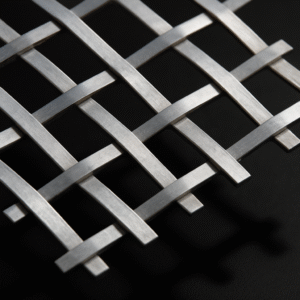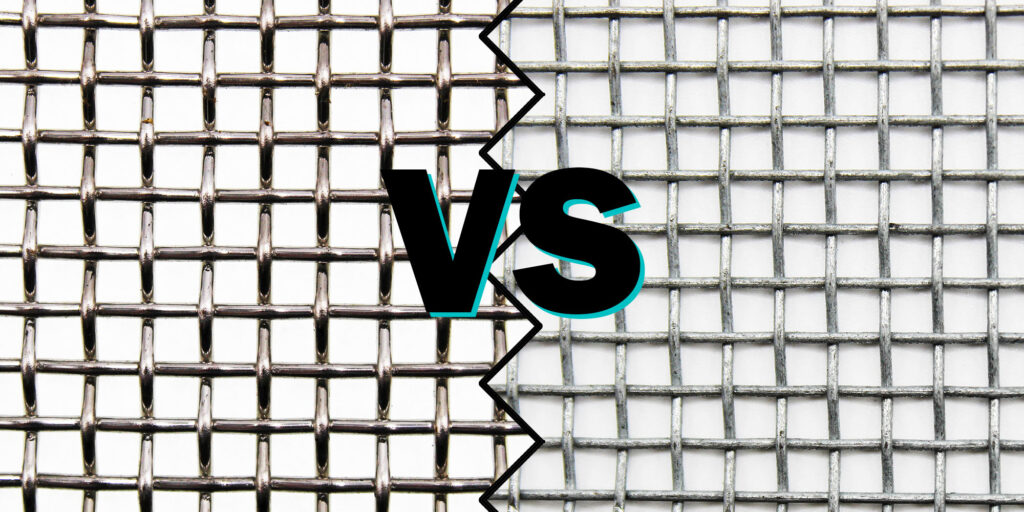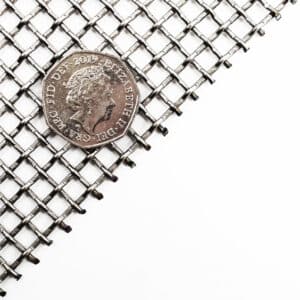









The addition of chromium to stainless steel gives it its luster and corrosion resistance. The element creates a protective layer that shields steel from environmental factors that cause rusting. Galvanised steel, which is steel coated with zinc, offers protection through a different mechanism. It serves as a barrier and, more importantly, as a sacrificial anode, corroding itself to preserve the base steel.
Their inception speaks volumes about their intended use and longevity. In environments that require both strength and corrosion resistance, stainless steel was developed.
While galvanised steel has been a cost-effective solution for adding durability to steel exposed to the elements, it has some limitations when it comes to lifespan and performance in highly corrosive environments.
Stainless steel and galvanised steel are often compared based on corrosion resistance, durability, and strength. In areas prone to rust, such as near the ocean or in industrial settings, stainless steel’s chromium-rich composition makes it ideal for use. In architectural and consumer products, its aesthetic appeal is often a deciding factor.
Galvanised steel, while not as inherently resistant to corrosion, can still perform admirably, especially in environments where it is not constantly exposed to moisture or chemicals. Its zinc coating sacrifices itself in order to protect the steel beneath. In galvanic protection, the zinc layer wears away over time, requiring maintenance or replacement to extend the life of the steel.
There are many factors to consider when choosing between stainless steel and galvanised steel. The non-reactive nature of stainless steel makes it ideal for medical equipment, food processing tools, and kitchenware. As a result of its resistance to high temperatures and ease of cleaning, it is widely used in these environments.
From fences and railings to automotive body parts, galvanised steel is used outdoors. Because of its affordability and resistance to rust, it is a suitable choice for structures that need durability without the corrosion resistance of stainless steel.
The initial cost can be a determining factor when choosing between stainless and galvanised steel. Generally, galvanised steel is more affordable upfront, making it an attractive option for large-scale projects or applications where budget constraints are tight. However, it’s important to consider the long-term costs associated with maintenance and replacement. Stainless steel, with its inherent durability and resistance to corrosion, often presents lower long-term costs despite its higher initial price point.
The decision between stainless and galvanised steel is not to be taken lightly. Factors such as environmental exposure, project budget, and the specific requirements of the task at hand should all be considered. Consulting with experts and considering the full lifecycle cost of the materials can help guide this decision.
For projects where aesthetics, hygiene, and long-term durability are paramount, stainless steel is often the best choice. Its maintenance-free finish and resistance to corrosion can justify the initial investment. In contrast, for outdoor constructions where initial cost and structural integrity are more critical than long-term aesthetics, galvanised steel offers a practical solution.
In order to determine which material best suits the needs of your project, it’s essential to weigh the pros and cons of stainless steel and galvanised steel carefully. Due to its high chromium content, stainless steel is renowned for its excellent corrosion resistance. Moreover, it maintains its luster and appearance over time, making it a preferred choice for applications requiring a high degree of aesthetic appeal. Despite its higher initial cost, stainless steel is often more cost-effective in the long run due to its durability and minimal maintenance requirements. It is extremely durable, can withstand high temperatures, and requires little maintenance, making it ideal for harsh environments or applications that require high cleanliness.
In contrast, galvanised steel, coated with zinc, offers good corrosion resistance at a lower initial cost, making it a budget-friendly option for many projects. Especially useful for outdoor applications, the zinc coating acts as a sacrificial anode, preventing corrosion. Nevertheless, this coating can deteriorate over time, especially if it is breached, leading to potential maintenance and longevity issues. Despite its durability, galvanised steel may require periodic maintenance to address corrosion, especially in environments where the protective zinc layer is compromised. Despite its suitability for outdoor use, it is not recommended for highly corrosive environments due to the possibility of zinc layer degradation.
| Aspect | Stainless Steel | Galvanised Steel |
|---|---|---|
| Corrosion Resistance | High resistance due to chromium content | Good resistance, zinc acts as a sacrificial anode |
| Aesthetic Appeal | Superior, maintains luster over time | Functional but can deteriorate aesthetically over time |
| Cost | Higher initial cost, but lower long-term due to durability | Lower initial cost, but potential higher long-term due to maintenance |
| Durability | Extremely durable, resistant to high temperatures | Durable but susceptible to corrosion if zinc layer is breached |
| Maintenance | Minimal maintenance required | Requires periodic maintenance to address corrosion |
| Environmental Suitability | Ideal for harsh environments and applications requiring cleanliness | Suitable for outdoor use, not recommended for highly corrosive environments |
For applications where durability and hygiene are paramount, such as medical devices, food processing equipment, and high-end construction projects, stainless steel is preferred. For outdoor constructions, automotive components, and utility applications where cost-effectiveness and functional durability are key considerations, galvanised steel offers good corrosion resistance at a lower price point.
The choice of material should align with the project’s needs, environmental conditions, and budget constraints by understanding these applications.
| Applications | Stainless Steel | Galvanised Steel |
|---|---|---|
| Construction Materials | Support beams, roofing, bridges (aesthetics, corrosion resistance) | Roofing, wall cladding, structural frames (less corrosive environments) |
| Automotive Components | Exhaust systems, grilles, trim parts | Body parts, frames (cost efficiency) |
| Marine Environment Structures | Propellers, railings, ship fittings | Dock supports, guard rails, barriers (minimal water contact) |
| Food Processing Equipment | Cookware, cutlery, machinery (non-reactive properties) | Not suitable (contamination, corrosion risk) |
| Medical Devices | Surgical instruments, implants, hospital equipment | Not suitable (zinc leaching, corrosion risk) |
| Outdoor Furniture and Fencing | High-end designs (cost consideration) | Patio furniture, garden fences, playground equipment |
| Electrical Enclosures | Control panels, instrument cases (corrosive environments) | Utility cabinets, cases (outdoor applications) |
| Household Appliances | High-end kitchen appliances, sinks, fixtures | Washing machines, dryers (cost is a factor) |
Stainless Steel: Stainless steel is renowned for its low maintenance requirements, mainly due to its corrosion resistance due to chromium, which forms a passive film on its surface. When damaged, this film repairs itself, offering continuous corrosion and rust protection. In order to keep its surface looking pristine, stainless steel only needs regular cleaning with soap and water to remove dirt and fingerprints. Stainless steel cleaners or mild detergents can be used for tougher stains. Avoid using abrasive materials that can scratch the surface and compromise the passive layer. Periodic inspections are advisable in highly corrosive environments to ensure stainless steel integrity, although significant maintenance issues are rare.
Galvanised Steel: While galvanised steel is also designed to resist corrosion, it does so through a different mechanism. Because zinc corrodes rather than steel, the zinc coating significantly extends the life of the underlying metal. Eventually, however, this zinc layer can wear away, especially in areas where the coating is damaged or in harsh environments, requiring more attention to maintenance. In order to maintain galvanised steel, regular inspections are necessary to identify areas where the zinc has corroded, exposing the steel to the environment. To mitigate further corrosion, these areas may need to be cleaned and zinc-rich paint or a similar protective coating applied.
There are many factors that influence the choice between stainless steel and galvanised steel, from environmental conditions to budgetary constraints.
In order to ensure durability, functionality, and cost effectiveness, decision-makers must understand the unique properties and applications of each steel.
Whether it’s gleaming stainless steel in a modern kitchen or the rugged protection of galvanised steel in an outdoor structure, the right choice will guarantee your project’s success.
Please contact us freely if you require any further assistance on this range, or any of our products.
As always, thank you for checking out our blog. We hope that this helps you with your project. We try to launch a couple of new guides every week. Eventually we will have covered everything there is to cover about mesh.
You may be interested in our blog that explores Stainless Steel vs. Galvanised Steel: The Battle of 1/4″ Welded Wire Mesh.
Our goal for our blogs and help guides is to answer as many questions as possible to help to explain the possibilities of mesh to our customers.




The largest range of wire mesh, chicken wire, wire fencing, woven wire mesh and perforated metal products in Europe, delivered direct from our Warrington warehouse.




Website by: Beech Web Services | Terms and Conditions | Cookie Policy | Privacy Policy | Website Terms and Conditions